We went to Uganda for the sole purpose of gorilla trekking. It exceeded all of our expectations plus some. Seeing these majestic animals in their natural habitat (because they don’t live in zoos anywhere in the world!) is truly a remarkable experience that should be on every animal lovers bucket list. Here I will share as much information as I can on planning gorilla safaris so that you can experience this for yourself!
You might be surprised to find out that mountain gorillas are one of the most endangered animals on our planet. In the 1960s and 70s, mountain gorillas were captured and taken to zoos around the world in an attempt to start a captive population, but none of them survived in captivity. After enduring years of habitat destruction, exposure to human diseases, war and poaching, the population of mountain gorillas was going down to critical levels. However, the good news is today, thanks to conservation efforts, the population of wild mountain gorillas is rising each year; the only great apes with a population increase. During our visit, we were told that the number of mountain gorillas in the world is around 1063 with around 600 in Uganda.
Because of the great conservation efforts, it is now hoped these special animals will continue to thrive even in their smaller areas of habitat, giving you more time to make this bucket list dream trip a reality!
Did you know? The gorillas you see in zoos around the world are all lowland gorillas.
Jump to a Heading Below
What is Mountain Gorilla Trekking or Gorilla Safaris?
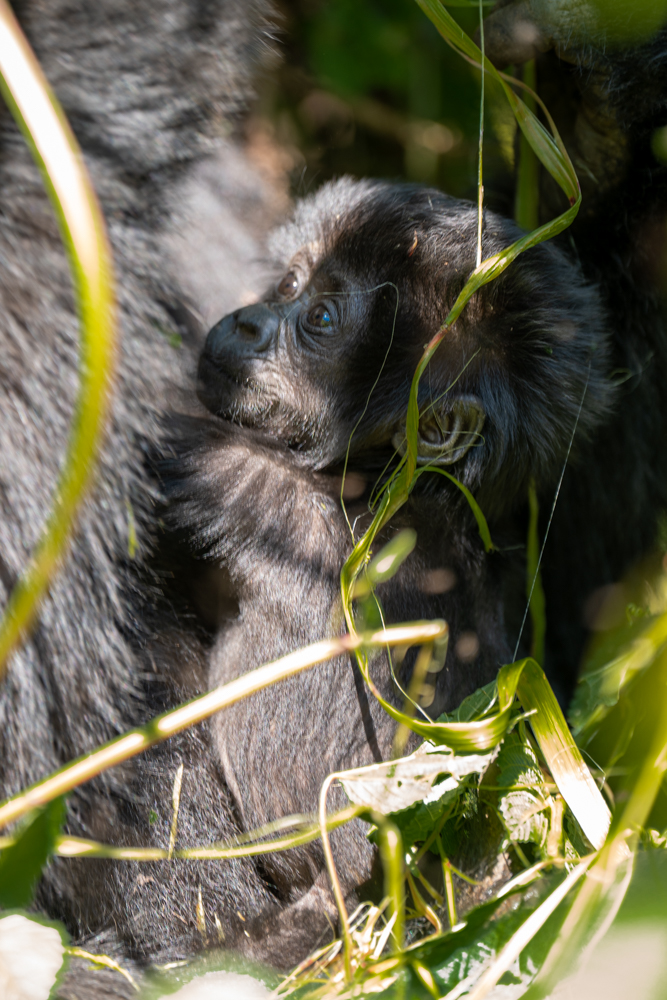 First things first, what exactly is gorilla trekking you might be asking. Essentially it is going on a hike in the jungle in search of mountain gorillas that have either been habituated (used to people) or are in the process of being habituated. While there are still plenty of gorilla families that are totally wild, many of the families in Uganda have been habituated to humans and will allow humans to visit them without being aggressive or running away.
First things first, what exactly is gorilla trekking you might be asking. Essentially it is going on a hike in the jungle in search of mountain gorillas that have either been habituated (used to people) or are in the process of being habituated. While there are still plenty of gorilla families that are totally wild, many of the families in Uganda have been habituated to humans and will allow humans to visit them without being aggressive or running away.
Habituated means the gorillas have gone through a 2 year process where they get used to human presence and will not run away or hide if humans approach. Even though they are used to humans being around them, the gorillas are still wild animals. All visitations occur with highly trained mountain gorilla trackers who know the specific gorilla family well.
Where Do Mountain Gorillas Live?
The world mountain gorilla population is distributed among two natural habitats which includes the Bwindi forest and Virunga mountains. Bwindi Impenetrable Forest National Park is situated in southwestern Uganda and is the single largest gorilla habitat in the world. There are 17 habituated families here, which makes it one of the best places for gorilla treks.
The other natural area where mountain gorillas can be found is in Virunga. This chain of mountains crosses the borders of Uganda, Rwanda and the Democratic Republic of Congo. Each country has their own national park where the gorillas can be found. These are Volcanoes National Park in Rwanda, Mgahinga Gorilla National Park in Uganda, and Virunga National Park.
Where to Go Gorilla Trekking in Uganda?
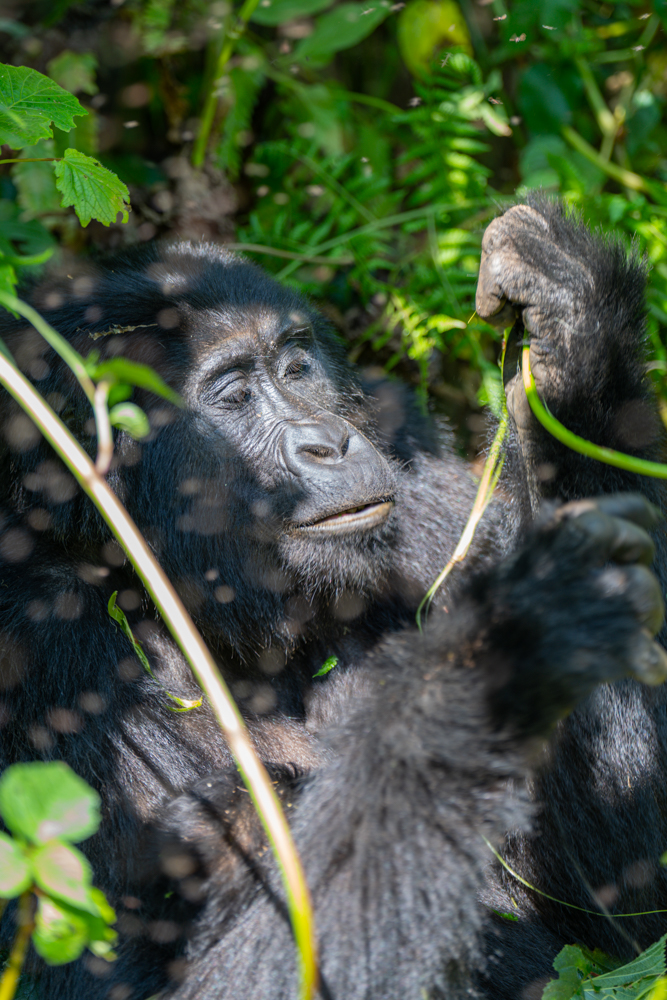 In Uganda there are essentially two main parks that you can go on gorilla safaris – the Bwindi Impenetrable Forest National Park and Mgahinga National Park. The are 18 gorilla families that have been habituated in Uganda. As mentioned above, 17 of which are in Bwindi National Park and 1 in Mgahinga National Park. For this reason, among others, most visitors go to Bwindi for gorilla safaris.
In Uganda there are essentially two main parks that you can go on gorilla safaris – the Bwindi Impenetrable Forest National Park and Mgahinga National Park. The are 18 gorilla families that have been habituated in Uganda. As mentioned above, 17 of which are in Bwindi National Park and 1 in Mgahinga National Park. For this reason, among others, most visitors go to Bwindi for gorilla safaris.
Gorilla trekking in Bwindi Impenetrable National Park is available from 4 different areas: Buhoma, Ruhija, Rushaga and Nkuringo.
- Ruhija sector in the east is comprised of gorilla groups: Mukiza, Oruzogo, Bitukura, Kyaguliro
- Buhoma region in the north consists of Habinyanja, Katwe, Mubare and Rushegura
- Nkuringo area in the southern part has Nkuringo, Christmas (the family we saw), Posho and Bushaho
- Rushaga has habituated families: Kutu, Bikingi, Mishaya, Busingye, Kahungye, Rwigi, Bweza, Nshongi and Mucunguzi.
For those going on a gorilla trek in Mgahinga Gorilla National Park, the Nyakagezi gorilla group is the only habituated gorilla family available to visit.
Best Time of Year for Gorilla Trekking in Uganda
As locals tell us, gorilla trekking can be done any time of year, however there is a peak and low season based on the weather – dry and wet. Given that gorilla tracking is often an all day affair, up and down steep mountainsides, we highly recommend visiting only during the dry season. This is June, July, August and December through February.
At this time, the habitat is drier, making it much easier to find your way through the dense vegetation and steep slopes. Mind you, there will still be puddles to traverse and mud to get stuck in even during the dry season, so you can only imagine how messy it would get in the rainy season.
That said, we heard that during the wet season the trekking is often much shorter as the gorillas do not move around quite as much making for a shorter day. Regardless, the day will still entail ups and downs on slippery slopes!
Obtaining Mountain Gorilla Permits
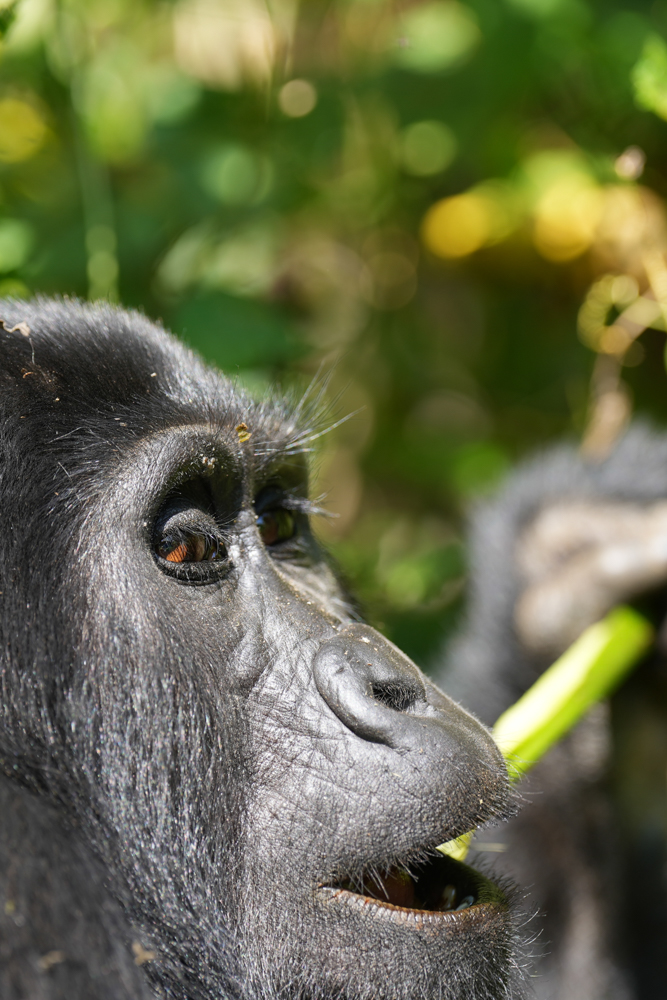 One of the most important things to note about visiting mountain gorillas in the wild is that access to them is highly controlled. Each gorilla family can only be visited for a maximum of 1 hour per day by no more than 8 people. This means that the demand for gorilla permits is quite high. As such, you are advised to obtain your gorilla trekking permits at least 6 months in advance, especially if you plan to visit during the high season of June – September.
One of the most important things to note about visiting mountain gorillas in the wild is that access to them is highly controlled. Each gorilla family can only be visited for a maximum of 1 hour per day by no more than 8 people. This means that the demand for gorilla permits is quite high. As such, you are advised to obtain your gorilla trekking permits at least 6 months in advance, especially if you plan to visit during the high season of June – September.
Currently, gorilla permits cost $700 per person-for foreign non-residents, You can secure one through a reliable ground tour operator or your hotel in Uganda or through the Uganda Wildlife Authority (UWA). There are several ways you can go about this. If you know where you want to stay, your hotel can then obtain your permits for you so they will be the most convenient to that location. Or, if you know which sector you want to visit, you can try to get your tour operators to obtain the permit you want and then you can book your accommodation based on its location.
If you would like to spend more time with majestic mountain gorillas you can obtain a gorilla habituation permit which allows you 4 hours with the gorillas and will cost $1500.
Permits are non transferable and non refundable. Additionally, all guests must be at least 15 years old to obtain a permit. There are rare exceptions to this age limit, but note that due to the rugged terrain and fluid environment, it is not recommended for anyone younger than 12 years old.
What to Expect on a Gorilla Trekking Experience
There is no one size fits all experience when it comes to gorilla trekking in Uganda. On our visit we met several people at the hotel who had all returned from their treks and none of us had the same experience!
In general you can expect that you will hike anywhere from 30 minutes to 3 to 5 hours to find your gorilla family. On average it takes about 2 hours to locate them, then you spend 1 hour with the gorillas and then 2 hours back. In total a trekking of 5 hours is pretty normal.
When you are issued your permit, you are permitted to visit a specific gorilla family. This means your tracker will go out in the morning before you to try to locate the gorilla family you have been chosen to visit. They may find them quickly, or it could take all day. In the meantime, you are hiking down the mountainside, possibly through tea plantations (we did!) and into the dense forest attempting to find your trackers and the gorilla family!
The trek will be hot. The trek will be steep. The trek will have a lot of bugs and pokey branches. These are all part of the experience. Plan accordingly!
 How physically fit do I need to be?
How physically fit do I need to be?
To be honest, anyone can do this trek with some help and some preparation. Will it be hard? Yes. Overall, a trek to see the gorillas does require a certain level of fitness, but we saw people of all ages (above 15) and all physical fitness levels going on treks. If you have physical mobility issues, make sure your booking agent knows this in advance and can attempt to get you assigned to a family that is typically less difficult to track.
I did find this to be a challenging trek even though I hike a ton. Depending on your group, some groups move quite quickly up and down the mountain making it difficult to keep up as you all need to mostly stay together. Additionally, it is often very hot and humid and you are at high altitude.
Make sure to drink plenty of water before, during and after your trek, take energy boosting snacks and get help!
Note, one of our most important Uganda tips is that you travel with travel insurance. For this trip I used SafetyWing which was affordable and covered all the activities I planned to engage in.
Hiring a Porter
Most guests doing a gorilla trek hire a local porter for the day to carry their bag and to help them up and down the mountain as needed. Maybe you don’t need a porter, but hire one anyway. These are villagers from the local communities who live on very little throughout the year. You are paying a lot of money to visit the gorillas, so why not add a little bit to the local economy as well. The $15-20 you provide will mean a lot more to them than it does to you in the longer term.
And trust me, having a porter is amazing. They carry your bag (with your 2-3 liters of water and lunch), but more importantly they hold your hand as you are slipping down the steep slopes and help you across the narrow log over the raging river. You will be happy that you got one, I promise.
What to Wear on Gorilla Safaris?
In general most people recommend that you wear more neutral colors that work with the local environment – think tans, greens, browns. We had heard to avoid black and blue as they attract biting flies. Of course that is all that I own, and I was fine. I did not see or get bitten by anything during our trek.
There are a lot of spiky bushes that you will walk through, so it is recommended to wear long sleeves, long pants and long socks to protect against the biting ants.
It is hot, so you will want to dress in light, breathable clothes (we love wool!) that keep you protected from the sun. Also consider bringing a sun hat, hiking gloves and trekking poles.
Bring your favorite, worn in, comfortable waterproof hiking boots/shoes with good traction. Depending on where you stay, some hotels offer gaiters to keep water, stones and mud out of your shoes. If your hotel doesn’t offer these, you might consider bringing them as they are very helpful.
Other things to note – do not wear animal prints or military camouflage designs.
What to Bring on Your Gorilla Trekking Excursion
- Packed lunch and 2-3 liters of drinking water
- Rain jacket
- Insect repellent and sunscreen (biodegradable please!)
- Mini first-aid kit with antiseptic, plasters and wet wipes
- Phone and/or camera gear including extra SIM cards, batteries and battery packs.
- Hand sanitizer
- Trekking Poles
- Face mask (These are required while with the gorillas)
What Camera equipment should I bring?
To capture great photos of the amazing gorillas and scenery of Uganda, good camera gear is essential. This was a tough one for me while planning my trip to Uganda. I haven’t used my actual camera in years because my iPhone is so easily accessible, but knew that I needed something better for this epic trip. I decided to rent a camera to ensure I had the newest features and fastest lenses.
I would always advise bringing a DSLR, a digital single-lens reflex camera, with an interchangeable zoom lens on safari. In general, the best lenses for wildlife photography are in the range of 200-400 mm. However for the gorillas, you are often much closer than that, so we opted for a 70-200 lens with 2.8 aperture. I found this lens perfect for our time with the gorillas. I could have used a 400 zoom at times, but I wouldn’t have wanted to waste time changing lenses. What is most important is a fast lens as it can be quite dark under the brush. For landscape shots, you could bring a wide-angle lens in the range of 24-100 mm
My Gorilla Trekking Experience
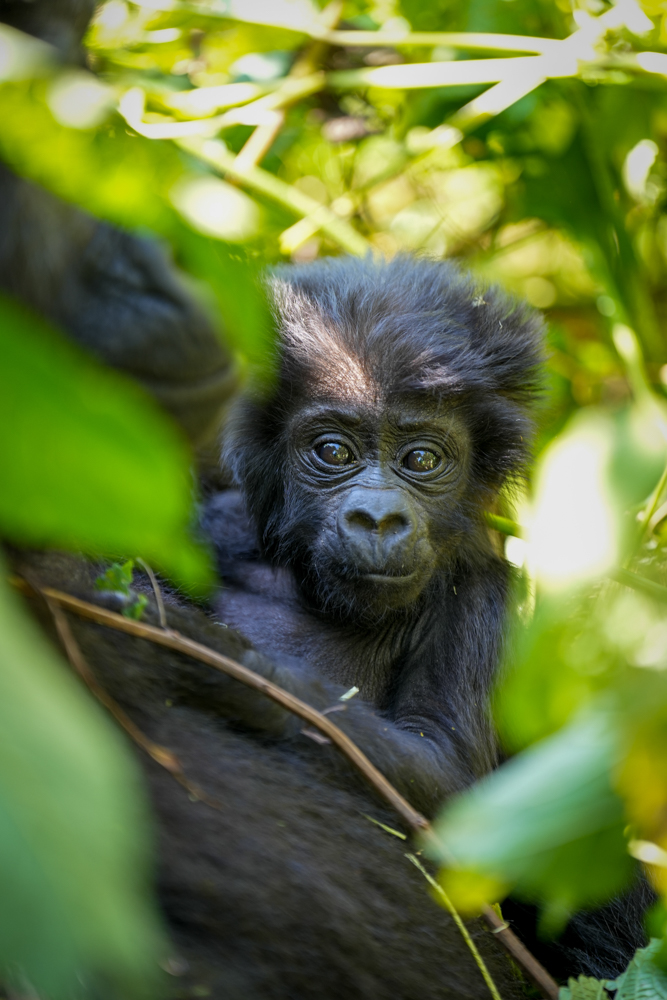
Our group was assigned the Christmas family in the Nkuringo area. There are only 8 gorillas in our family, including two babies – one only 6 weeks old. The large silverback gorilla is named Obama.
The trek for our group began from the permit office down the village road before we began our descent down the mountain. It is easy going down in the morning as the air is cool and everyone is filled with excitement. Our group consisted of us 4, a couple traveling around Uganda by car and a solo woman.
Meeting Our Gorilla Family
It took us about 2.5 hours to get down the mountain, through the tea plantations and through dense forest that was being chopped down making space for us to pass through. Often times the ground was not even the ground, rather it was a collection of vines, roots and swampy areas. Now I know why they said sturdy boots!
Once we arrived to our gorilla family we were instructed to leave all of our belongings with our porters except our phones and cameras. No camera bags, no tripods, no trekking poles. We then were led to the gorilla family that was expertly hidden in the bushes right in front of our eyes!
The Gorilla Experience
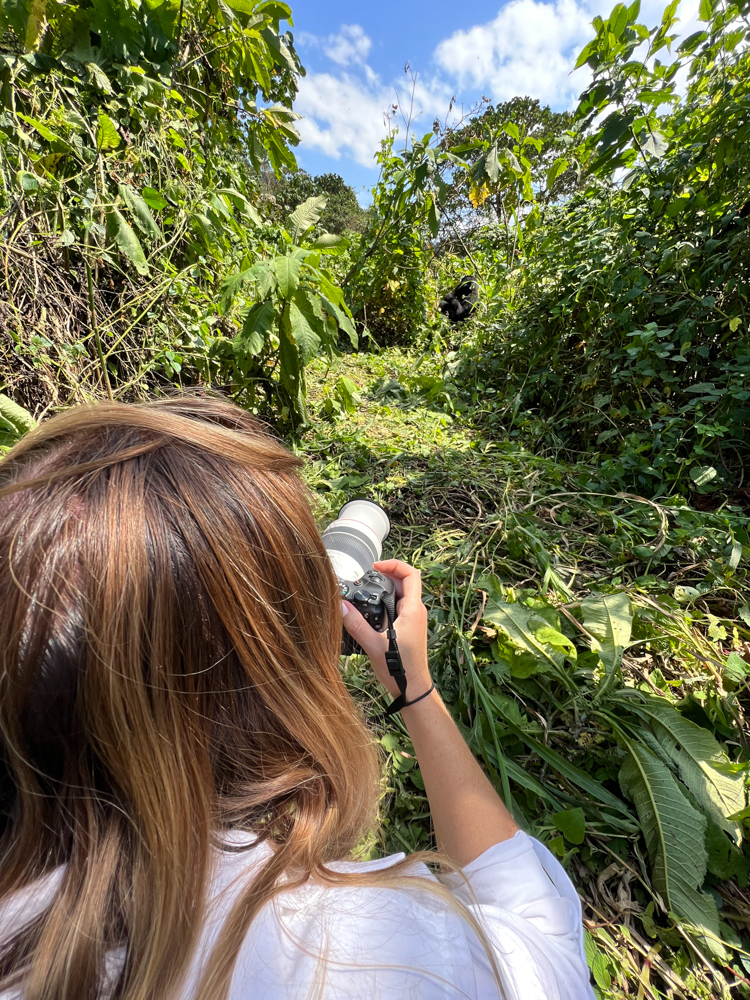
Our gorillas did not sit still, rather they were constantly moving around, which means we were constantly moving around. Of course our family did not ever sit in the open, they were always eating in the bushes with a million flies buzzing around them making photography more of a challenge. They would sit for a few minutes before heading off to another area nearby.
During our visit, two of our three trackers had to leave as there was an unhabituated family nearby that they were trying to keep away as it was agitating the silverback in our group. Because of this, the silverback was moving around quite a bit more than normal they said and he was being a bit more vocal.
Our guides were great about creating spaces for us to see the gorillas without a ton of brush in the way, but sometimes that’s just the luck of the draw. Some families tend to be out in the open and playful or like ours tucked away eating and minding their own business in their own little corners.
Soon enough, we were given our 10 minute warning. You might think that an hour is a short amount of time, but it actually felt just perfect. There was plenty of time to sit and watch these beautiful gentle giants without a camera, as well as plenty of time to take photos.
After our 1 hour was up, we were led straight up a mountainside to rejoin a “path” where we then ate lunch on the ground before beginning our trek back up the mountain and returning to our starting point. All said and done, it took about 5.5 hours for our excursion.
Conclusion
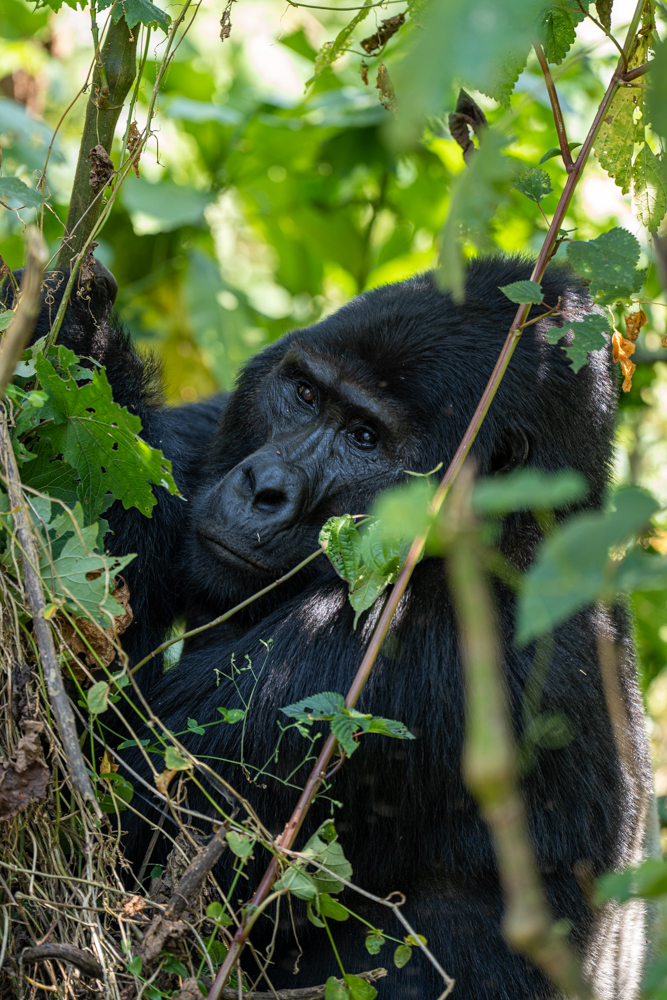
Seeing mountain gorillas in the wild, up close and personal was a life-changing experience. It is here that you can fully realize how important conservation efforts are around the world. During this trip I visited without my son, as he was too young, but I am so thankful and hopeful that with all of the government and community efforts supporting the endangered mountain gorillas they will continue to be here with us for many many more centuries for all our children to enjoy.
Apart from visiting the gorillas of Uganda, this country is filled with there are lot of other interesting excursions including traditional game viewing safaris in Queen Elizabeth National Park, chimpanzee tracking or simply viewing the beauty of Uganda. You can read more on how to plan your trip to Uganda here.
I hope that this article helps inspire you and move you into the planning phase of booking this dream trip!
If you have any questions, feel free to ask and I will share what I know.
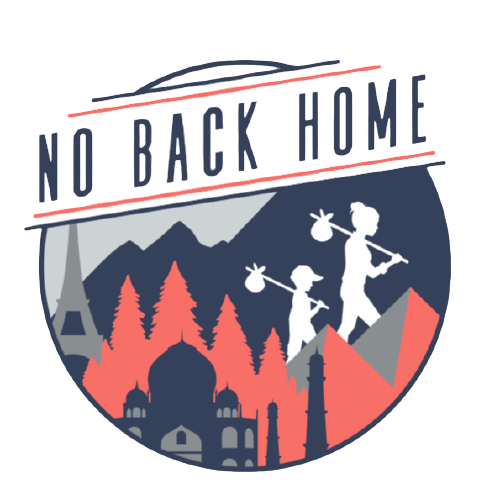
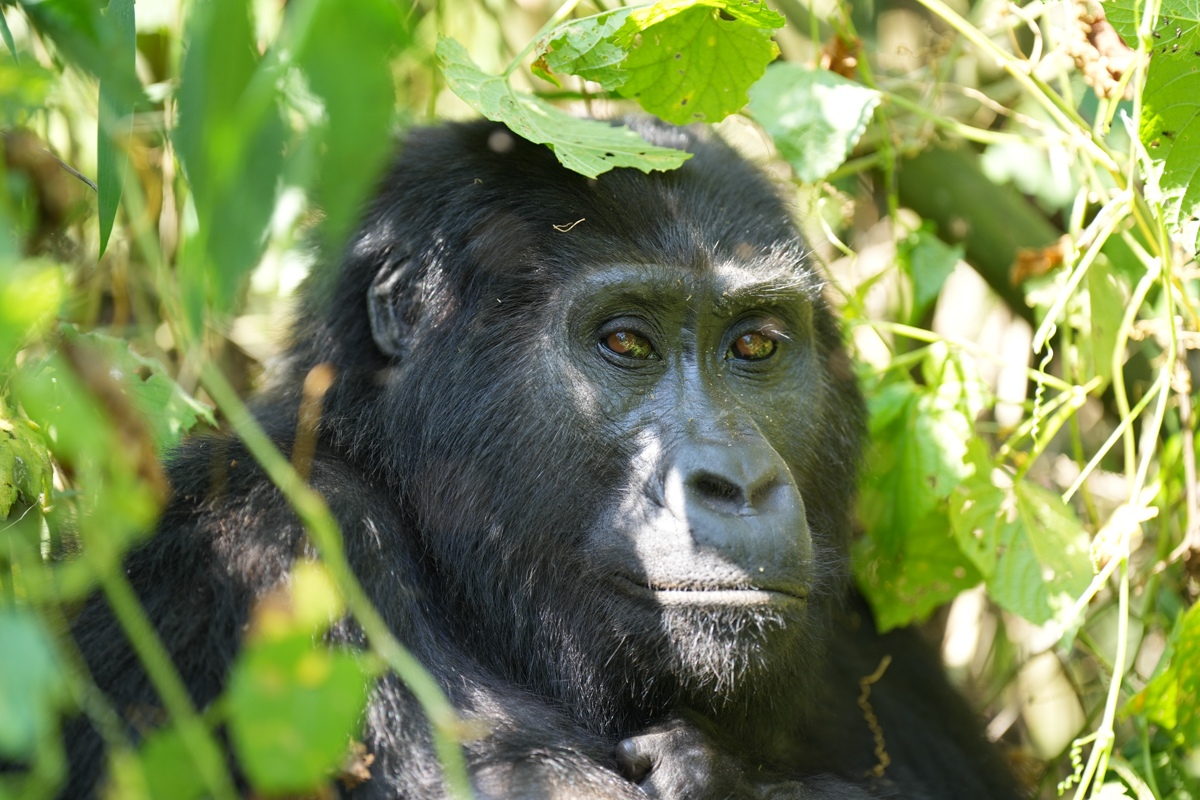
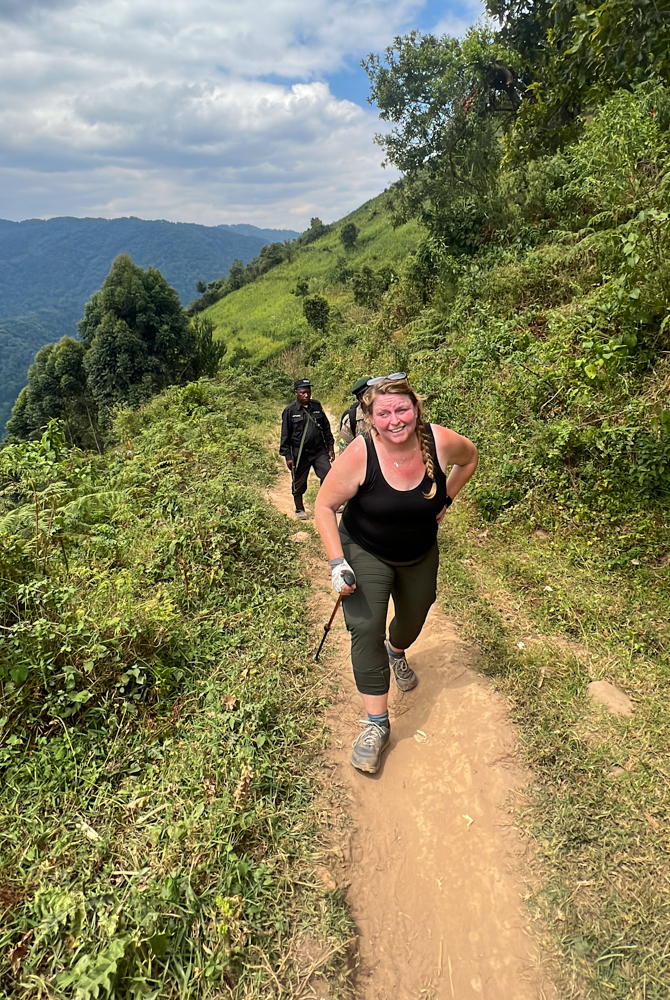

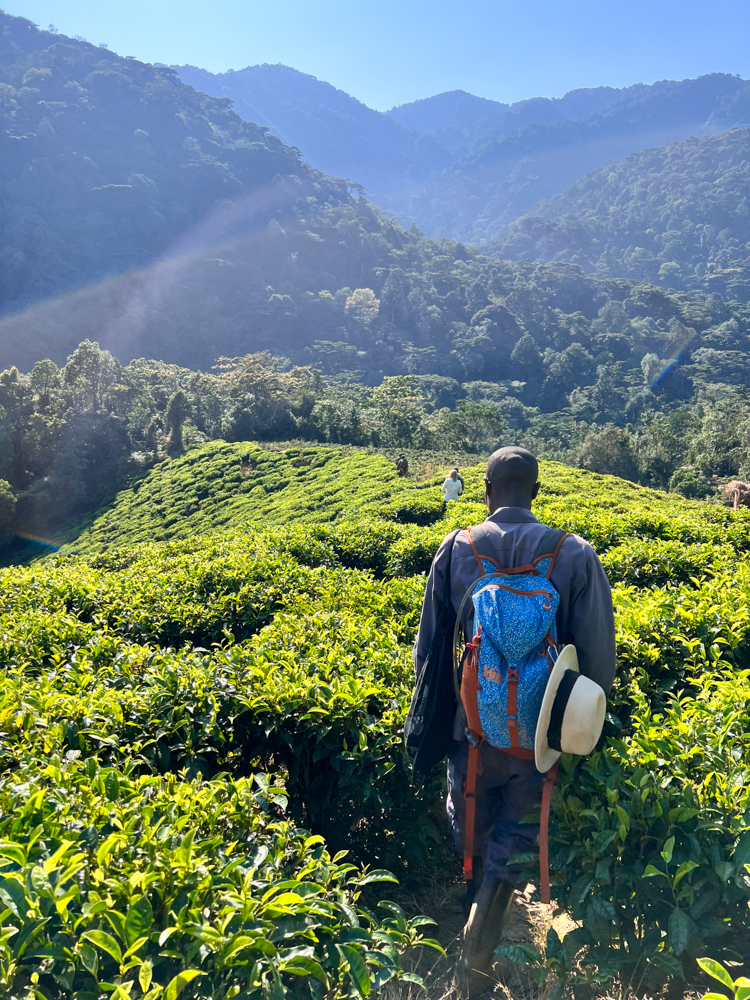
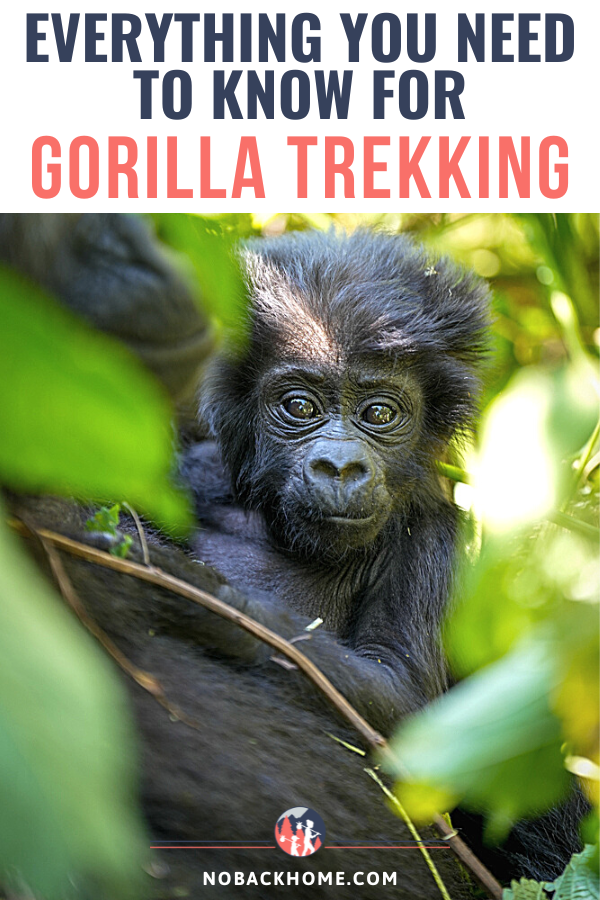
Thanks For Sharing this Amazing and Informative post
Thanks for Sharing this Informative post